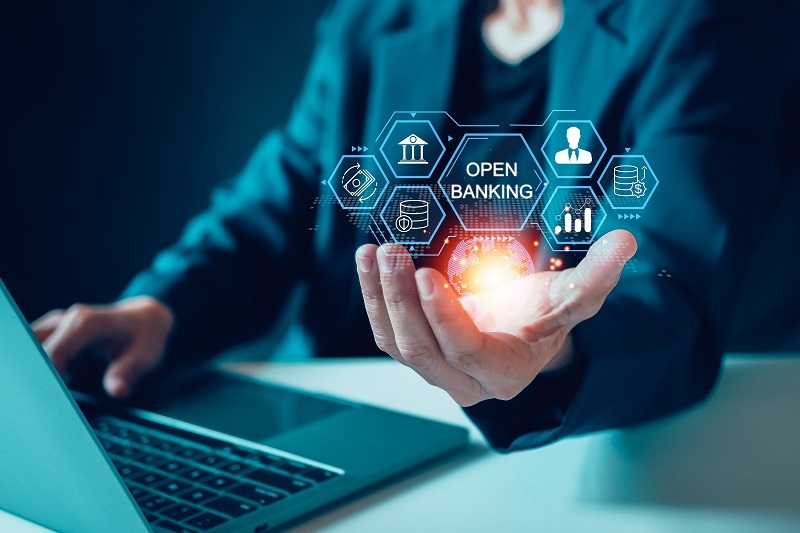
Just think if you could just manage all your money at one place, pay all your bills and make day to day life transactions without moving from one platform to the other. This is only possible with the support of open banking.
The idea may sound futuristic but the reality is that this is something practical and properly functional in today’s life. It has been slowly changing the way people used to connect with their banks earlier.
In this blog, you will learn what is open banking and how it can impact everyone’s life.
Open banking is a simple but powerful idea. It lets people share their financial information securely between banks and other apps they trust.
Think of it like giving a friend a spare key to your house — but only for one room, and only for a short time. You still control the house. You decide who gets in and what they can do.
In the same way, open banking gives you the power to let apps or services access parts of your financial data.
The goal of open banking is to make your experience in making digital financial transactions smoother and faster without compromising your control and safety.
Must Read: Credit Score Guide: What It Means & How to Improve Fast
Open bank allows the platform to directly verify your account details from your bank. It completely eliminates the need of filling long forms and uploading your bank statements. This is how open banking works in 2025.
You can understand better with the following points:
You decide which service or app can access your data. It’s never automatic or hidden.
The app uses an API connection to your bank. It doesn’t store your login or password.
Your financial details — like balances or transactions — are shared in a secure, limited way.
You can stop sharing you details anytime you want. This is because the access is temporary and transparent.
Open banking offers a clean and safe connection that can save your time and makes your experience in making digital transactions smoother.
Money today moves faster than ever. People expect things to just work — instantly, safely, and without confusion.
Open banking answers that need. It removes walls between banks, apps, and payment systems. Instead of one company holding all the control, open banking gives it back to the people — to you.
It means less paperwork, fewer delays, and a more connected experience. Businesses can verify accounts in seconds. Shoppers can pay directly from their bank without using a card. Developers can build smarter financial tools.
It’s like giving the internet a better way to handle money — one that’s open, flexible, and centered on trust.
Open banking helps consumers in various ways which are listed in the following list:
You can directly pay from your bank account without using a debit or credit card.
You decide what data to share and with whom.
Budgeting and finance apps can connect to your accounts automatically.
No need for long forms or manual verifications.

The benefits of open banking for businesses are listed in the below points:
You can verify bank accounts instantly instead of waiting days.
Secure connections mean fewer fake accounts and chargebacks.
Direct Payments
You can avoid extra fees linked to card networks.
Customers complete transactions quickly and stay happy.
In short, open banking helps make financial life less complicated. It lets money move like messages — instant, secure, and under your control.
Safety is one of the most essential things when the topic is finance because no one wants to lose their hard earned money.
Open banking is built with security as its core. It’s not about sharing your login details. In fact, that’s exactly what it helps avoid.
When you connect your bank to an app through open banking, your sensitive data stays protected behind layers of encryption and regulated access. Only what’s necessary is shared — and only for as long as you allow it.
Banks and licensed providers must follow strict government rules. They can’t do anything with your information without your clear permission.
Therefore, open banking is a new thing, but it is not reckless. Instead, the system is designed to build trust.
We’re still in the early chapters of this story. Right now, open banking focuses mostly on payments and data sharing. But it’s growing fast.
In the near future, it could lead to open finance — where not just banks, but investment accounts, insurance, and other financial services connect through the same secure framework.
Imagine having all your financial life — from savings to stocks — synced in one place. That’s where this is heading.
As regulations evolve and more players join in, the experience will only get simpler, safer, and more personal.
For businesses, open banking is more than a tech upgrade — it’s a way to build trust with customers.
Instead of asking users to share private data manually, they can connect through verified channels. That means fewer errors, faster onboarding, and better conversion rates.
Payment providers and platforms can also use open banking to cut down transaction fees and reduce fraud. It’s a win-win for both sides.
In short, open banking helps businesses do what customers expect — make everything easier, safer, and transparent.
Open banking isn’t just about technology. It’s about connection — between people, banks, and the digital world we now live in.
It’s a reminder that finance doesn’t have to be complicated or locked behind walls. It can be open, simple, and built around real human choice.
So next time you use an app that knows your balance, sends a payment, or helps you budget better — that’s not magic. It’s open banking, quietly working behind the scenes to make your life easier.
This content was created by AI